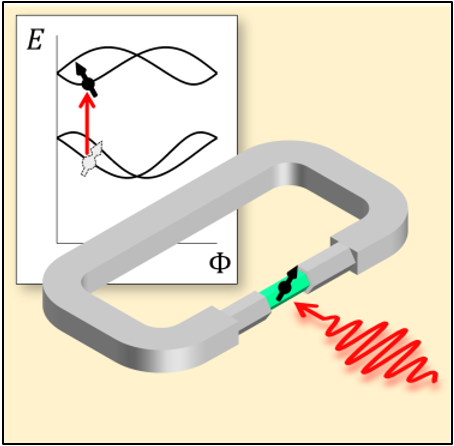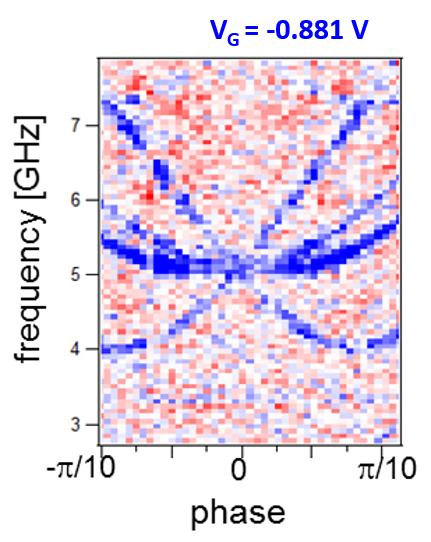Project MASSS – Marie-Sklodowska Curie Action by Leandro Tosi

Welcome
Welcome everybody! This is the web page of the Marie-Sklodowska Curie Action that I have been running the last two years in the Quantronics Group. I invite you to read about the project, ask questions if you don't understand something and comment! The heart of the project is explained in the next paragraph and then details can be found in the different sections.
The MASSS project’s goal is to single-out an electronic spin within a superconducting structure and perform the coherent manipulation of this dedree of freedom. As a first step in this direction, we have shown that combining the appropriate ingredients in a hybrid superconducting circuit, electronic states with different spin polarization can be resolved. Most of the information below is about these recent results which show that a spin two-level system is at reach.
Microwave spectroscopy reveals distinctive fine structure in the absorption spectrum of a superconducting electrical circuit.
Atomic spectra contain fine structure—split spectral lines that arise from the coupling of the spin of the electron with its orbital motion around the nucleus. Here, we show analogous fine structure in the quantized excitation spectrum of a superconducting electrical circuit that includes a semiconducting nanowire with strong spin-orbit coupling. Remarkably, the spin state of a single electron in the nanowire has a measurable impact on the electrical properties of the circuit, which contains over a trillion electrons.
The circuit consists of a submicron indium arsenide (InAs) nanowire enclosed by a superconducting aluminum loop. Discrete localized states, known as "Andreev bound states," form in the nanowire due to coupling to the superconductor. When absorption of a photon induces a transition between two of these states, the loop inductance changes. We have measured the absorption spectrum of the circuit by monitoring the resulting frequency shift of a microwave resonator inductively coupled to the loop. The spectrum shows a fine structure of spin-split Andreev states, well accounted for by a simple model with spin-orbit coupling as the key ingredient.
On the longer term, the challenge will be to manipulate an individual spin in a superconductor—the spin of a single quasiparticle that is physically located at the same place as the many electrons forming the superconducting ground state. Here, we have done the first step: showing that there are spin-resolved states.
Index
- Building Andreev States: intro: In this pedagogical introduction you will find the explanation on how bound states appear in a weak-link and in particular why they develop a fine-structure in presence of spin-orbit coupling.
- Weak-links in InAs nanowires: In this section I provide the basic idea of how to make a superconducting junction from an hybrid superconductor-semiconductor device
- Absorption Spectroscopy using cQED-setup: The working principle of our detection scheme is discussed in this section.
- Spin-orbit splitting of Andreev States revealed by microwave spectrocopy: The main results of my Action are presented here with what tries to be a simple explanation!
- Coherent Manipulation of Spin (preliminary) : You can check the new (and preliminary) results on the coherent manipulation.
Go to the open-access publication: arXiv, PRX

You can check here some pictures that are beyond a scientific explanation!

(If you want to know something about me, check my publications and my other interests)
Aknowledgements
Technical support from P. Sénat is gratefully acknowledged. We thank A. Reynoso for providing us codes related to his work and for useful discussions. We thank P. Orfila and S. Delprat for nanofabrication support. This work has been supported ANR contract JETS, by the Renatech network. and by the Marie Sklodowska-Curie individual fellowship grant 705467.